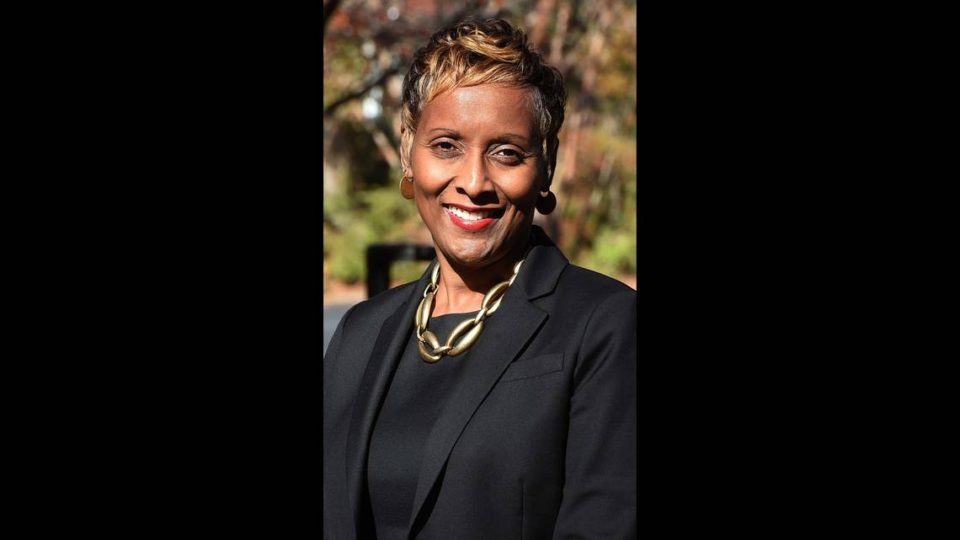Richardson Likes Its “Passion for Journalism’
Ex-Sports Columnist John Smallwood Dies at 55
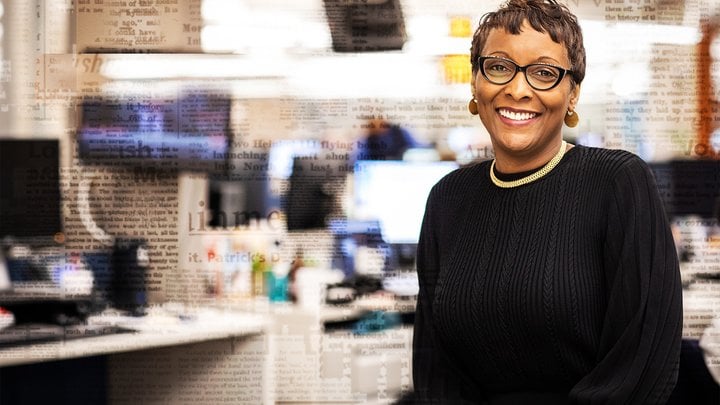
Richardson Likes Its ‘Passion for Journalism’
Monica R. Richardson, senior managing editor of the Atlanta Journal-Constitution, has been named executive editor of The Miami Herald, McClatchy announced Monday, noting that she will be the first Black top editor in the Herald’s 117-year history.
Richardson will also oversee el Nuevo Herald and the Bradenton Herald, and operate as McClatchy’s Florida regional editor.
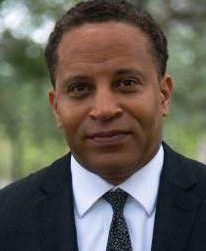 Russell Motley (pictured),, president of the South Florida chapter of the National Association of Black Journalists, told Journal-isms that his phone wouldn’t stop ringing after the appointment was announced. “This is exciting news — a new era at the Miami Herald. During my talks with the Herald’s leadership team, they were adamant about diversifying key positions. Clearly they’ve made good on their promise.”
Russell Motley (pictured),, president of the South Florida chapter of the National Association of Black Journalists, told Journal-isms that his phone wouldn’t stop ringing after the appointment was announced. “This is exciting news — a new era at the Miami Herald. During my talks with the Herald’s leadership team, they were adamant about diversifying key positions. Clearly they’ve made good on their promise.”
Motley added, “It was “time for the tide to change; everything happens for a reason.”
Richardson’s appointment comes after racial dynamics played out at the newspaper in the fall. The Herald weathered an uproar over distribution of what the company called “deeply offensive and racist content” in Libre, an independently produced weekly newspaper focused on Cuban exiles that for about eight months had been inserted each Friday into El Nuevo Herald.
Before that, NABJ and others complained about an “observed continued pattern of racially insensitive remarks/tweets by sportswriter Armando Salguero” and demanded a meeting, which took place.
Motley said in September that the Herald had pledged to fill a vacancy for Municipal Government Team Editor with a Black journalist, as the paucity of Black editors at the Herald has been an NABJ concern. That vacancy is still open.
“Recently, the Miami Herald made a commitment to name a high-ranking Black executive to its management team and they delivered,” NABJ said in a statement Monday.
Richardson replied on Facebook, “I am here in part due to the support of this organization. I met some of my greatest journalism inspirations and mentors through NABJ. People like Reggie Stuart, the late Gwen Ifill and others opened doors for me and I plan to keep them open behind me. I appreciate the support and acknowledgment!”
Richardson told David Smiley of the Bradenton Herald, “I’m pleased to be working in a newsroom where journalism is the core mission of everything. That’s what drives me in my career. It’s the passion,” she said. “I wouldn’t be coming to Miami if I didn’t see that passion for journalism.”
“Richardson will lead the talented team of journalists at the Herald, el Nuevo Herald and the Bradenton Herald focusing on audience and digital subscription growth and continuing the newsrooms’ mission of delivering strong, independent local journalism that is essential to an ever-growing and increasingly diverse audience of readers, viewers, and listeners in South Florida,” a McClatchy release said.
It also said, “In addition to being a journalist and leader focused on digital strategy, Richardson has also been a strong voice and advocate for Diversity and Inclusion in newsrooms. She is a member of and has served as a leader for various journalism industry associations. She has been named, in consecutive years, among the Atlanta Business League’s Top 100 Women of Influence and has served as an esteemed juror to the national Pulitzer Prize board. . . .”
A July listing compiled by NABJ showed only 11 Black top editors of general-circulation newspapers. According to the most recently available data, there were 1,279 daily newspapers in the United States in 2018.
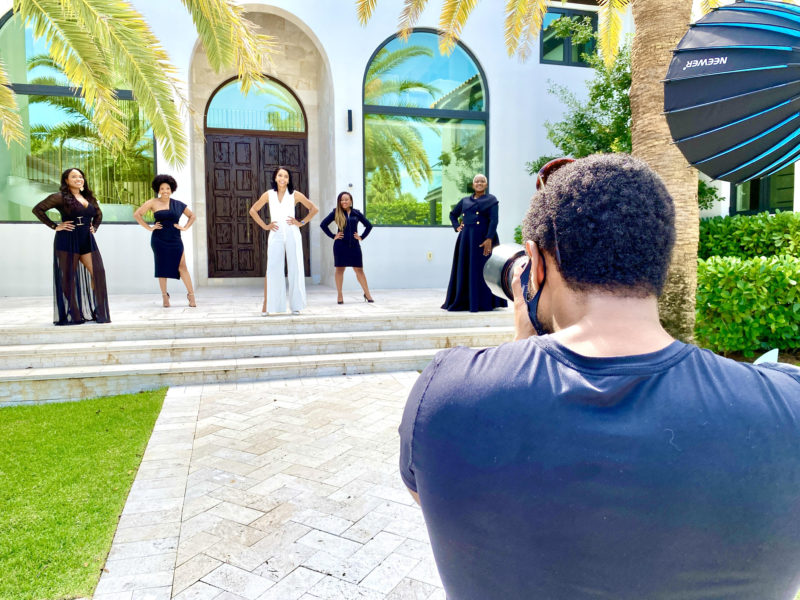
Richardson will be leaving Atlanta, known as a Black Mecca, for Miami, where Latinos vastly outnumber Blacks. The previous top editor, Mindy Marques, is a daughter of Cuban immigrants and grew up in the area. Richardson did not respond when asked whether she spoke Spanish.
Blacks or African Americans comprise 17.7 percent of Miami-Dade, according to 2019 Census figures, while Latinos are 69.4 percent, white alone, 12.9 percent, American Indian and Alaska Native alone, 0.3 percent and Asian alone, 1.6 percent.
However, Motley, who edits Legacy Miami magazine, an independent Black-focused supplement that pays the Herald and the South Florida SunSentinel to insert its product into their newspapers, said his upcoming issue features Black female professionals. “It sheds a light on a black middle class that people say is not here.”
Ex-Sports Columnist John Smallwood Dies at 55
“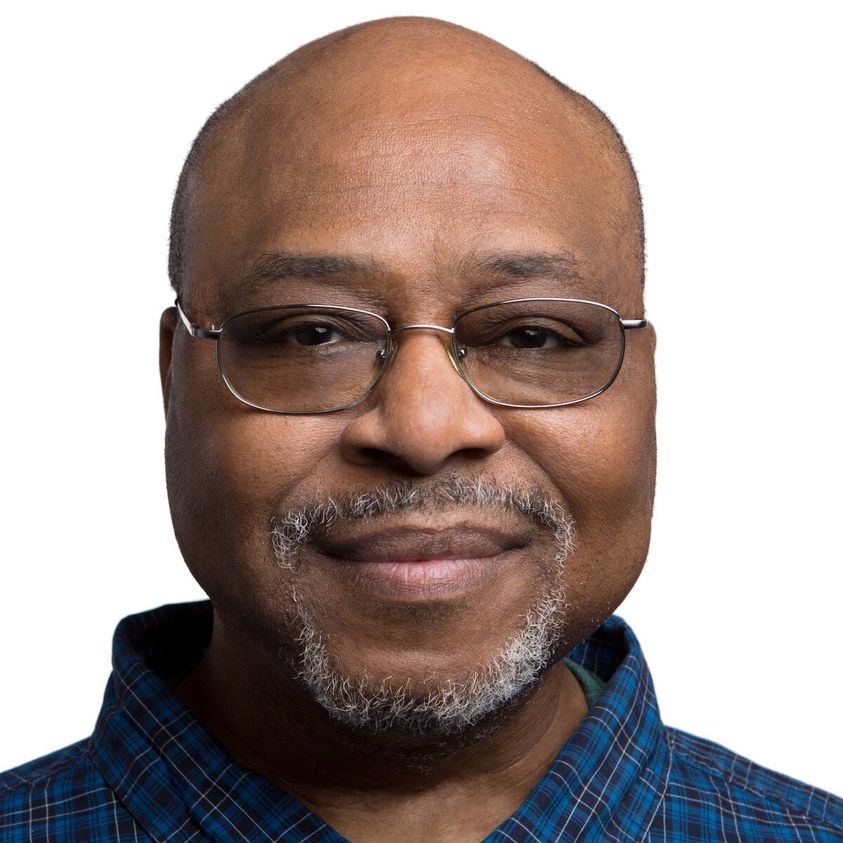 Former Philadelphia Daily News and Inquirer columnist John Smallwood (pictured) passed away this weekend at age 55,” Kevin Kinkead reported Monday for crossingbroad.com/
Former Philadelphia Daily News and Inquirer columnist John Smallwood (pictured) passed away this weekend at age 55,” Kevin Kinkead reported Monday for crossingbroad.com/
“The news was first shared on Sunday by the newspapers’ managing editor, Pat McLoone:
Sad day for Philadelphia sports media as John Smallwood passes away at age 55. A wonderful guy, a devoted father and husband and a talented and passionate writer, John surely will be missed. John suffered far too long after a lengthy illness. RIP.
— Pat McLoone (@PatMcLoone) December 6, 2020
“Smallwood had been dealing with . . . illness for quite some time,” Kinkead wrote.
“You might recall that he left the Daily News/Inquirer last year as part of another round of buyouts that also saw Sam Donnellon and Rick O’Brien depart. John was most recently assigned to the Villanova beat, but did a little bit of everything during a stint that began in 1994 and featured more than two decades of column writing. He really was a jack of all trades for the large majority of his Philly newspaper career. He was also a frequent guest on Daily News Live, before that show went away. . . .”
A brief Inquirer bio said, “John Smallwood has been on our staff since 1994. He began as the beat writer for Villanova University basketball and was promoted to columnist in 1995 — a position he held for 20 years. He has won several awards while covering the Super Bowl, World Series, NBA Finals, Stanley Cup Finals, Final Four, World Cup and Olympics.”
As a columnist, Smallwood was not shy about his views. In June 2013, a month after Dan Snyder, owner of the then-Washington Redskins, declared to USA Today, “We’ll never change the name of the team. It’s that simple.”
Smallwood declared, “After 48-plus years of life, 25 years as a full-time sports reporter, 20 years at the Daily News and nearly 19 years as a sports columnist here, I no longer will consciously [use] the official name of the NFL team in Washington.”
- Les Bowen, Philadelphia Inquirer: John Smallwood, 55, remembered for his gregarious, friendly manner and his calm, measured writing style
Black Medics Seek Journalists’ Help on COVID
Dec. 6, 2020
Black Medics Seek Journalists’ Help on COVID:
Reporters’ Reach Called at Historic High
. . . Juan Williams in Quarantine
Halfway Around Globe, an Apology for Racism
Cross, Capehart, Duncan, Diaz to Host Weekends
Missing Native Women Top ‘Censored’ Story
BuzzFeed Refuses ICE Demand for Sources
Durhams Named M.E. of News & Observer
Public Stations Commit to Diversity Moves
12 Selected Nieman Visiting Fellows
Ramos: Media Should Have Resisted Trump More
Facebook Says It’s Prioritizing Anti-Black Speech
In Sea Change, Blacks Grace Magazine Covers
Too Many Media Critics Are White. Really?
Editing Microagressions Said to Reveal Biases
Short Takes
Support Journal-ismsAmerica’s Black doctors and nurses — from Charles Drew University, Howard University, Meharry Medical College, Morehouse School of Medicine, National Medical Association, National Black Nurses Association, the Cobb Institute and blackdoctor.org — join the National Urban League to write this “love letter” to the Black public about COVID-19. (Credit: YouTube)
Reporters’ Reach Called at Historic High
With another spike in COVID-19 cases expected once again to disproportionately hit the Black and brown communities, and skepticism in those communities about a new vaccine, Black medical experts are reaching out to Black journalists for help.
“The power and reach of Black journalists is at a historic high watermark. The conversation we initiate here today, which is the first of its kind, is intended to be an ongoing dialogue, to spotlight health issues of concern to the Black community, not just throughout the pandemic but beyond,” Marc H. Morial, president and CEO of the National Urban League, said in opening a press call with Black medical experts, the Los Angeles Sentinel reported.
More than 50 participants were part of the Nov. 20 conversation, spokesperson Teresa Candori messaged Journal-isms on Saturday. “The conversation was initiated to make journalists aware that this resource of Black health experts is available to them, and to let them know how they are working with the federal government to build confidence around the vaccine development process,” she added.
The Centers for Disease Control reported Nov. 30 that Black, Latino and Native American people are being hospitalized for COVID at nearly four times the rate of whites.
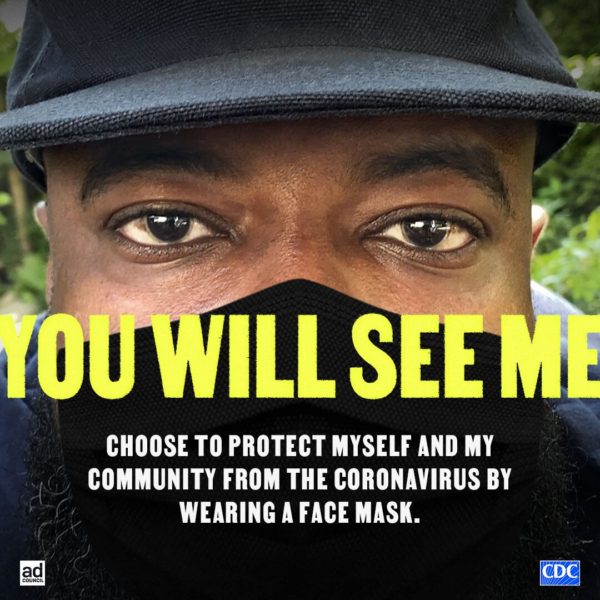
But “Black Americans continue to stand out as less inclined to get vaccinated than other racial and ethnic groups: 42% would do so, compared with 63% of Hispanic and 61% of White adults,” Cary Funk and Alec Tyson reported Thursday for the Pew Research Center. “English-speaking Asian Americans are even more likely to say they would definitely or probably get vaccinated (83%).”
Black Americans are especially likely to say they know someone who has been hospitalized or died as a result of having the coronavirus: 71 percent say this, compared with smaller shares of Hispanic (61 percent), White (49 percent) and Asian American (48 percent) adults. the Pew report said.
On Thursday, the Urban League and other Black leaders announced a task force in New York “to both ensure the vaccine is readily accessible to Black New Yorkers and address concerns in Black communities about the safety and efficacy of the COVID-19 vaccine.” The leaders were “concerned that America is currently ill-prepared and ill-equipped to deliver any of the COVID-19 vaccines to Black communities.”
“We chose New York for the Task Force because it went from being the epicenter of the COVID-19 crisis to the nation’s leader in demonstrating how best to combat the pandemic,” Morial said.
Separately, Morial said in his “To Be Equal” column, “On December 10, we will present a town hall on the development and potential distribution of a vaccine.”
The press call featured Morial, Dr. Reed Tuckson, founder of the Black Coalition Against COVID; Dr. Leon McDougle, National Medical Association president; Dr. Martha Dawson, National Black Nurses Association president, Dr. Wayne A. I. Frederick, president of Howard University, and Dr. Valerie Montgomery Rice, president of Morehouse School of Medicine.
The Black Coalition Against COVID also put together a letter and video, “A Love Letter to Black America.“
Frederick, a surgeon, said during the press call, “The social determinants of health put African Americans at risk. The frontline jobs that they have put them at risk in a virus that is as contagious as this and then the comorbidities that they may have, that they’re more likely to have than the rest of the population also put them at risk.
“We have Black medical professionals and other colleagues who are interested in protecting our communities. We all must come together in this moment, to ensure that we bring hope, that anticipation of tomorrow is embedded within all of us as we take our oaths to provide care to our community.”
- Dan Barry and Annie Correal, New York Times: The Epicenter: As winter turned to spring, the coronavirus hit a corner of Queens harder than almost anywhere else in the United States.
- Rodney A. Brooks, history.com: Why African Americans Were More Likely to Die During the 1918 Flu Pandemic (Oct. 5)
- Amaris Castillo, Poynter Institute: How a team led by a journalist is fighting coronavirus misinformation in the Filipino community
- Melody Chironda, allAfrica.com: Africa: Women’s Voices ‘Locked Out’ in Covid-19 Reporting
- Amanda Darrach, Columbia Journalism Review: What has journalism learned from the pandemic?
- Amy Goodman with Jodi Archambault and Allie Young, “Democracy Now!”: As COVID Devastates Native Communities, Indigenous Voters Played Key Role in Defeating Trump (Nov. 26)
- Renée Graham, Boston Globe: Every effort must be made to convince Black people of a COVID-19 vaccine’s efficacy and safety
- Tiffany Hsu, New York Times: Ad Council’s Challenge: Persuade Skeptics to Believe in Covid Vaccines
- Laura Rodríguez Presa and Alison Bowen, Chicago Tribune: Lost in translation: How language barriers can add anguish and complicate care for COVID-19 patients who don’t speak English (Nov. 15)
- Rod Watson, Buffalo News: Be thankful this generation didn’t have to do the really hard stuff (Nov. 25)
- Beverly White, KNVC-TV, Los Angeles: Black Community Combating Skepticism Over Vaccine
. . . Juan Williams in Quarantine
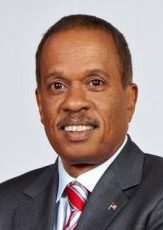 “Fox News host Juan Williams (pictured) has tested positive for COVID-19 and is currently in quarantine, The Daily Beast has confirmed,” Lachlan Cartwright and Justin Baragona reported Thursday for the Daily Beast.
“Fox News host Juan Williams (pictured) has tested positive for COVID-19 and is currently in quarantine, The Daily Beast has confirmed,” Lachlan Cartwright and Justin Baragona reported Thursday for the Daily Beast.
“Williams had filmed alongside his co-hosts on The Five as recently as Wednesday.
“The New York Times was the first to report on the liberal Fox News star’s diagnosis.
“ ‘I’m not great but I’m not dying or anything. I’m worried about myself and my family. My wife doesn’t want me to come back to the house right now. On lots of levels it’s concerning,’ ” Williams told The Daily Beast on Thursday evening. . . .”
Tears streamed down the face of Carmen Parahi, a New Zealand journalist of 20 years who is Maori, during an emotional discussion with TVNZ host Jenny-May Clarkson, who became similarly emotional. (Credit: YouTube).
Halfway Around Globe, an Apology for Racism
The American news media’s racial reckoning of 2020 found a parallel last week in another former British colony where white settlers displaced indigenous residents and where, for more than a century, its media portrayed those residents in racist ways.
“On Monday, New Zealand’s Maori woke up to an apology from one of the country’s biggest media organisations, Stuff: “No matou te he; We are sorry,” Flora Drury reported Saturday for the BBC.
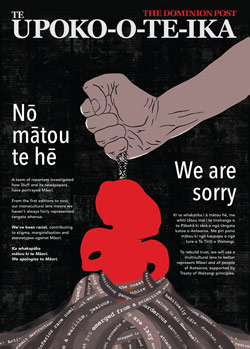 “It came after a months-long deep dive into their own reporting which found their coverage of Maori issues had ‘ranged from racist to blinkered’ over the company’s 160-year history.
“It came after a months-long deep dive into their own reporting which found their coverage of Maori issues had ‘ranged from racist to blinkered’ over the company’s 160-year history.
“The investigation does not make for pretty reading. Scouring its papers, journalists found early, openly racist front pages and recent letters full of bile. It found a tendency to over-report on Maori child abuse cases, while playing down similar crimes in the European, or Pakeha, community. It found countless occasions where it simply hadn’t bothered to ask the Maori community for their side of the story, siding instinctively with the more powerful white population.
“It had, as Stuff’s editorial director Mark Stevens said in an editorial published the same day, divided the country into ‘two separate groups, us and them’.
“For Carmen Parahi, the apology was personal. She had seen up close the issues uncovered by the investigation during her 20-year career as a journalist in New Zealand, and she had dedicated months to leading the investigation for Stuff. But more importantly, it meant something to her as a Maori woman. . . .”
Stuff’s monthly unique audience of 2 million makes it the most popular news website in New Zealand. Drury also wrote of the website, “Importantly, it has also pledged to do things differently going forward. Among other things, the group has established a ‘Pou Tiaki’ section, which will showcase Maori stories, with Parahi as its editor.”
Stuff reported Friday, “On Tuesday, Race Relations Commissioner, Meng Foon, speaking to Te Ao – Māori News in te reo Māori, congratulated Stuff on the apology and said, ‘most of the mainstream media outlets of this country belittle, release racist articles, and trample on the mana of Māori.’
“Foon said that all in the media should work together to remove institutional biases.”
Stuff published its pieces of reckoning under the headline, “Our Truth, Tā Mātou Pono” (Roughly translated as “Elevating the honor and respect of Aotearoa,” the Māori name for New Zealand):
- Andrew Becroft and Glenis Philip Barbara, stuff.co.nz: Children’s Commissioners: It’s not just about what the media reports, but what they choose to leave out
- Sharon Brettkelly, stuff.co.nz: The Detail: Stuff’s investigation into itself
- Michelle Duff, stuff.co.nz: The traditional Sunday brunch, a newspaper and a taste of racism
- Joel Maxwell, stuff.co.nz: On being a Māori journalist in Stuff, you keep coming back to that moral choice
- Glenn McConnell, stuff co.nz: You can’t change the past but you can fix the future
- Carmen Parahi, stuff co.nz: Newsrooms need to reflect the voices of society not the bias of their news bosses
- Tony Smith, stuff co.nz; Monocultural sports coverage has marginalised Māori stars
From Thursday’s “Reid Report”
Cross, Capehart, Duncan, Diaz to Host Weekends
“With former weekend host Joy Reid now entrenched as MSNBC’s anchor at 7 p.m. each weekday night, the network has picked political analyst Tiffany Cross and journalist Jonathan Capehart to take her place on Saturday and Sunday mornings,” Jeremy Barr reported Wednesday for the Washington Post.
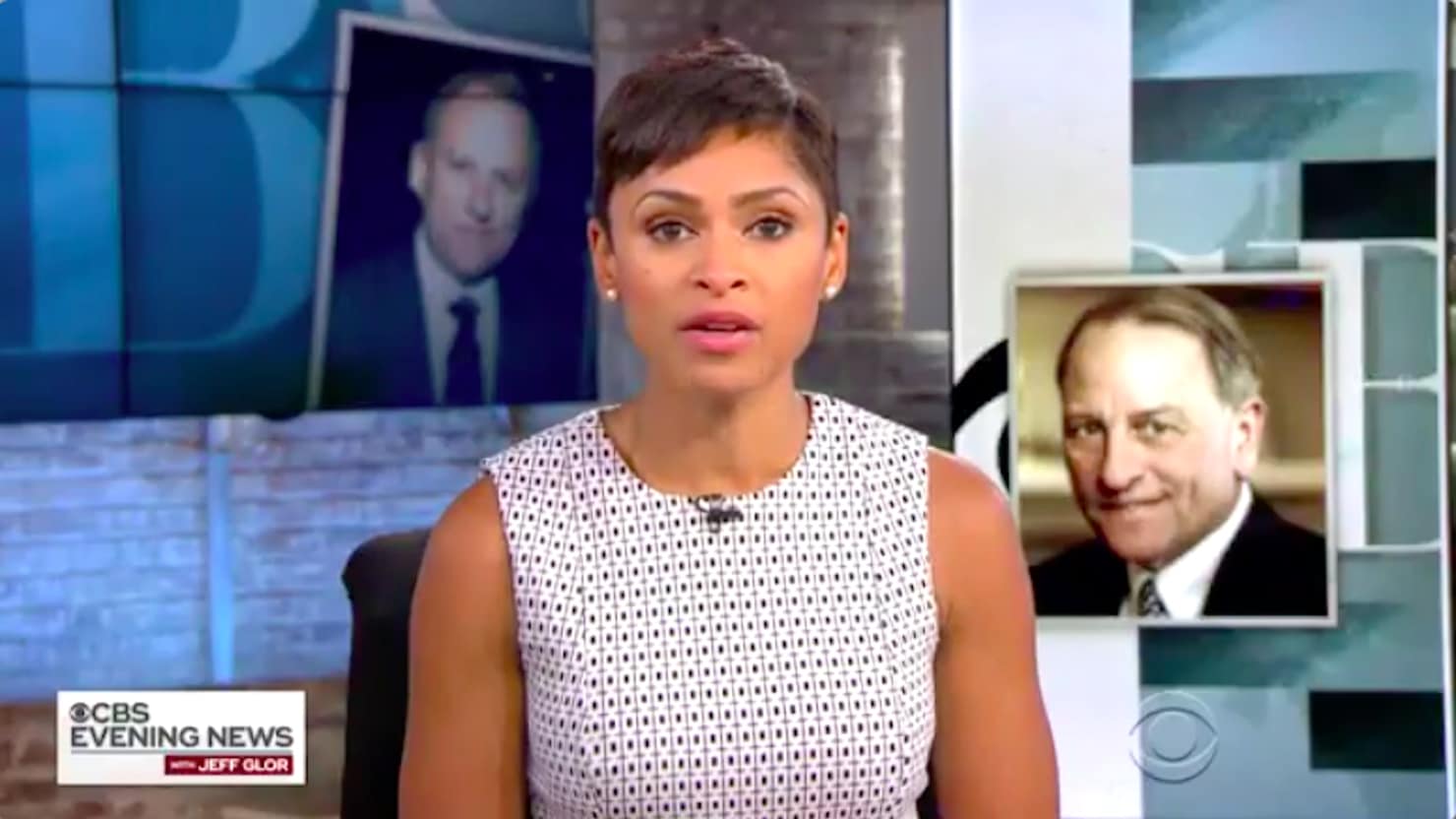 Separately, “National correspondents Jericka Duncan (pictured) and Adriana Diaz will take over as anchors of ‘CBS Weekend News,’ the ViacomCBS unit said Friday, setting in place a more formalized structure for the weekend evening-news broadcast after its logistics were disrupted by the coronavirus pandemic,” Brian Steinberg reported Friday for Variety.
Separately, “National correspondents Jericka Duncan (pictured) and Adriana Diaz will take over as anchors of ‘CBS Weekend News,’ the ViacomCBS unit said Friday, setting in place a more formalized structure for the weekend evening-news broadcast after its logistics were disrupted by the coronavirus pandemic,” Brian Steinberg reported Friday for Variety.
“Diaz will anchor the Saturday broadcast from Chicago and Duncan will anchor Sundays from New York. . ..”
Barr continued, “Cross, 41, will host a two-hour show at 10 a.m. Saturdays, starting Dec. 12, while Capehart, 53, takes over the same time slot on Sundays, starting Dec. 13. Neither show has a name yet.”
In a joint Cross-Capehart appearance Thursday on “The Reid Report,” Cross said, “Joy, I would not be here without you. You`re an example of why diversity matters on the screen and off the screen. You don`t walk through the door and shut it. You walk through the door and hold it open for others.
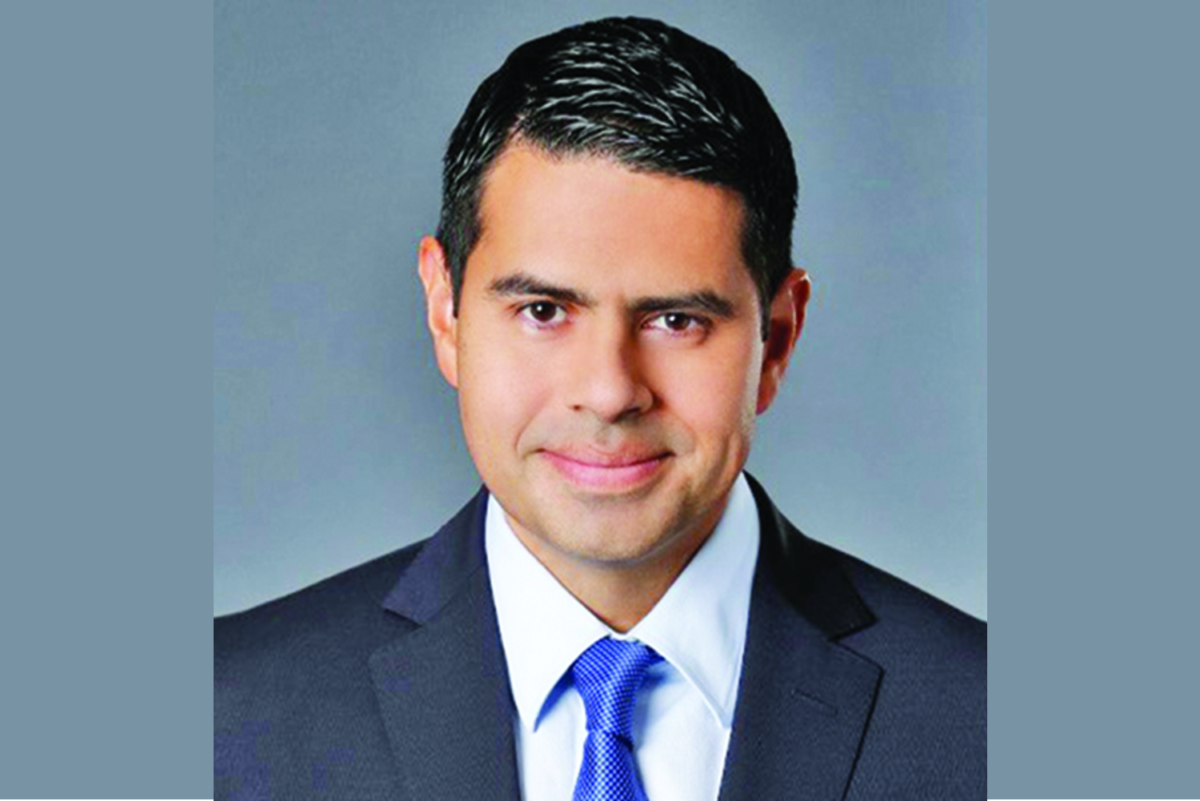 “You grabbed my hand. You took me with you. Throughout this process, I dealt with women who look like me. Our new boss, Cesar Conde (pictured), is a historic hire man of color. And so, this is why diversity matters.” Reid responded, “Okay. Don`t make — you`re not allowed to make me cry on TV, because I do not cry. I try not to cry. I really do.”
“You grabbed my hand. You took me with you. Throughout this process, I dealt with women who look like me. Our new boss, Cesar Conde (pictured), is a historic hire man of color. And so, this is why diversity matters.” Reid responded, “Okay. Don`t make — you`re not allowed to make me cry on TV, because I do not cry. I try not to cry. I really do.”
Conde, then chairman of Telemundo and the company’s international business, in May was put in charge of a newly formed NBCUniversal News Group. In July, he set a goal of having a 50 percent diverse work force across his division.
Capehart said his show will be “about the news. Our viewers know what the news is, but what they want to know is — what does it mean? Put it into context and help me understand how it fits into the larger story. “
Reid told Capehart, “Jonathan, Sunday shows has been unfortunately very white and that`s now changing big-time.
Capehart replied, “Yes, and, well, just by my sitting in the chair it`s going to change that big-time.
“Yes,” Reid said.
“But we’re also — we’re also going to do it in a way by bringing people to the table who haven`t been to the Sunday show table before,” Capehart responded.

Missing Native Women Top ‘Censored’ Story
“Since 1976, Project Censored has released an annual list spotlighting important news stories that, for various reasons, did not rise to the collective attention of mainstream media or were otherwise buried with benign or malicious intent,” Paul Rosenberg reported Nov. 26 for American Prospect.
The list’s primary purpose “is to explore and publicize the extent of news censorship in our society by locating stories about significant issues of which the public should be aware, but is not, for a variety of reasons,” according to Project Censored’s founder, Carl Jensen.
“The organization publishes a book each year (State of the Free Press 2021), which also helps to reveal the deeper patterns in this media neglect. Many of these stories are about violence and victimization of women of color; or about failures in journalism and in ersatz news organizations; or about topics to which many would turn a blind eye, such as climate science, inequality, and corruption. The stories are distinct, yet somehow fit together.”
- Missing and Murdered Indigenous Women and Girls
“In June 2019 the Canadian National Inquiry into Missing and Murdered Indigenous Women and Girls released its final report, which received widespread news coverage in the United States,” Project Censored notes, yet “U.S. corporate news outlets have provided nearly nothing in the way of reporting on missing and murdered Indigenous women in the United States.
“That’s despite a problem of similar dimensions, and complexity, along with the election of the first two Native American congresswomen, Deb Haaland and Sharice Davids, who, Ms. Magazine reported, “are supporting two bills that would address the federal government’s failure to track and respond to violence against indigenous women [and] are supported by a mass movement in the U.S. and Canada raising an alarm about missing and murdered indigenous women and girls (MMIWG).”
“Four in five Native women experience violence at some time in their lives, according to a 2016 survey by the National Institute of Justice, cited in an August 2019 Think Progress report.
“About nine in 10 Native American rape or sexual-assault victims had assailants who were white or Black, according to a 1999 Justice Department report. . . .”
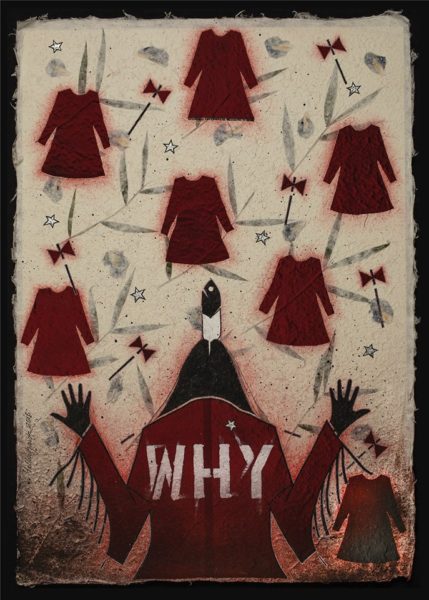
Second on the list:
“2. Monsanto ‘Intelligence Center’ Targeted Journalists and Activists
In its fight to avoid liability for causing cancer, the agricultural giant Monsanto (now owned by Bayer) created an ‘intelligence fusion center’ to ‘monitor and discredit’ journalists and activists, Sam Levin reported for The Guardian in August 2019. . . .”
The rest:
- ” U.S. Military — a Massive, Hidden Contributor to Climate Crisis
- “Congressional Investments and Conflicts of Interest
- “Inequality Kills: Gap Between Richest and Poorest Americans Largest in 50 Years
- “Shadow Network of Conservative Outlets Emerges to Exploit Faith in Local News
- “Underreporting of Missing and Victimized Black Women and Girls
- “The Public Banking Revolution
- “Rising Risks of Nuclear Power Due to Climate Change
- “Revive Journalism With a Stimulus Package and Public Option”
- Bloomberg View: An epidemic of violence against Native American women (Feb. 14, 2019)
- Lynn Elber, Associated Press: ‘Big Sky’ producers recognize Native American criticism
- Renée Graham, Boston Globe: 2020′s other epidemic: Violence against the trans community
- Richie Richards, Native Sun News Today: Anna Mae Pictou Aquash: One of the murdered and missing women (Feb. 28, 2019)
BuzzFeed Refuses ICE Demand for Sources
‘”Immigration and Customs Enforcement investigators issued a subpoena this week demanding BuzzFeed News identify its sources — an extraordinary attempt by the government to interfere with a news outlet acting under the protections of the First Amendment, and a move that the agency’s former chief lambasted as ’embarrassing,’ ” Hamed Aleaziz reported Friday for BuzzFeed News.
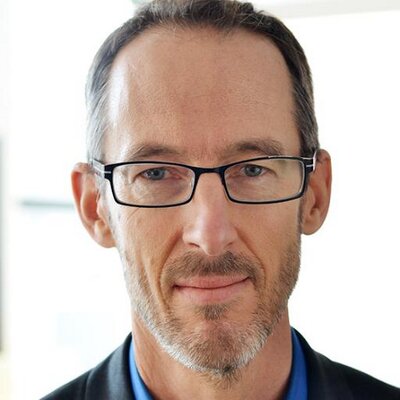 “BuzzFeed News emphatically rejects any requests for information about possible sources and methods of our reporting,” said BuzzFeed News Editor-in-Chief Mark Schoofs (pictured). “We do not confirm or discuss confidential sources, and this subpoena is an outrageous overreach by the federal government. It’s fundamentally at odds with the US Constitution and will not have any impact on our journalism.”
“BuzzFeed News emphatically rejects any requests for information about possible sources and methods of our reporting,” said BuzzFeed News Editor-in-Chief Mark Schoofs (pictured). “We do not confirm or discuss confidential sources, and this subpoena is an outrageous overreach by the federal government. It’s fundamentally at odds with the US Constitution and will not have any impact on our journalism.”
Aleaziz also wrote, “The administration has also targeted journalist sources. Specifically in the Department of Homeland Security, officials have warned employees not to discuss internal policies or documents with the media. They have also told employees to report colleagues they suspected of sharing sensitive internal information, along with those who requested information that fell out of their day-to-day duties.”
He lalso reported, “The subpoena, issued on Dec. 1 by an agent with the ICE Office of Professional Responsibility, concerns emails sent to ICE attorneys on a fast-track deportation program and plans to fine certain undocumented immigrants. It demands that BuzzFeed News “provide all documentation including, but not limited to: (1) date of receipt, (2) method of receipt, (3) source of document, and (4) contact information for the source of the document.
“The subpoena states that BuzzFeed News should produce the records to an ICE agent in Virginia by Dec. 22. . . .”
- Catherine Rampell and Jeremy Raff, Washington Post: Families like this one were torn apart at the border. The U.S. still hasn’t made things right.
- Maria Sacchetti, Washington Post: Biden sees Obama’s mass deportations as a ‘big mistake,’ plans to pause expulsions
- Madeleine Schwartz, Nieman Reports: How Journalists Beyond the U.S. Fight Back Against Government Intimidation (Nov. 24)
Durhams Named M.E. of News & Observer
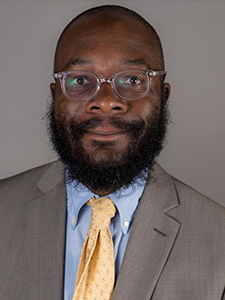 “Sharif Durhams (pictured), who made history as a journalism student at UNC-Chapel Hill and has spent the last dozen years helping produce news for digital audiences in Milwaukee and at CNN and The Washington Post, will now help run the newsroom at The News & Observer and The Herald-Sun,” Richard Stradling reported Thursday for the News & Observer in Raleigh, N.C.
“Sharif Durhams (pictured), who made history as a journalism student at UNC-Chapel Hill and has spent the last dozen years helping produce news for digital audiences in Milwaukee and at CNN and The Washington Post, will now help run the newsroom at The News & Observer and The Herald-Sun,” Richard Stradling reported Thursday for the News & Observer in Raleigh, N.C.
“Durhams, who attended middle and high school in Raleigh and has family here, will serve as managing editor for the newsroom.” He is also president of the National Lesbian & Gay Journalists Association, known as NLGJA: The Association of LGBTQ Journalists.
Stradling also wrote, “Durhams joined The Washington Post in April as night homepage editor. He had been at The Post previously, before going to CNN in Atlanta as senior editor for digital global programming. After several years at large, national news outlets, Durhams says he’s eager to get back to local news. . . .”
Public Stations Commit to Diversity Moves
“A coalition led by people of color in public media has gained pledges from nearly two dozen stations and national organizations in the industry to commit to changes within their workplaces focused on diversity, equity and inclusion,” Tyler Falk reported Wednesday for Current.org.
“Public Media for All is asking that over the next three years, participating stations and organizations complete 10 of 11 DEI initiatives proposed by the coalition. In the near term, the coalition asks participants to complete one item within the first 30 days after signing up and five after one year.
“The action items organizations agree to implement include paying interns, conducting pay equity studies, creating spaces in which people of color on their staffs can ‘heal, re-energize, and be empowered,’ and having white staffers ‘do work to dismantle racial bias, and learn to listen to and empower people of color coworkers.’ . . . ”
- Austin Fast, Current.org: Race discrimination suit against NPR gets go-ahead in court (Nov. 19)
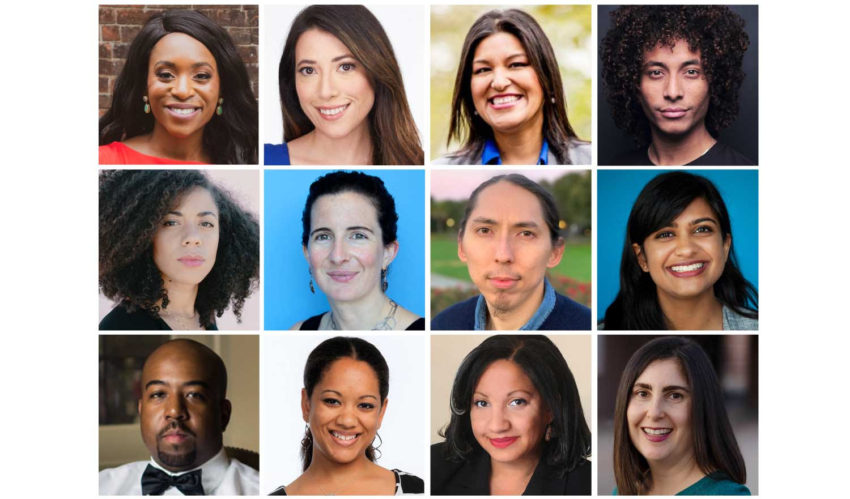
12 Selected Nieman Visiting Fellows
“In response to dual crises facing the nation — a pandemic and racial injustice — the Nieman Foundation for Journalism at Harvard has selected 12 innovative media professionals for focused project work as 2021 Nieman Visiting Fellows,” the foundation announced Tuesday.
“The fellows, who represent a broad range of communities and media outlets, will each spend time in the coming year working remotely, using resources at Nieman and Harvard University to develop projects advancing racial justice or improving public health journalism in the U.S. . . .”
- Nieman Foundation: Nieman Reports is looking for a senior editor to join its staff
A security guard escorts Jorge Ramos out of a Donald Trump news conference in Dubuque, Iowa, on Aug. 25, 2015.(Credit: YouTube)
Ramos: Media Should Have Resisted Trump More
The “celebrations I saw in the streets of Washington and other American cities after President Trump’s defeat last month reminded me so much of what I experienced in Nicaragua in the 1990s after the fall of Sandinismo and in Mexico in the 2000s after the fall of the Institutional Revolutionary Party’s ‘perfect dictatorship,’ which had lasted 71 years,” Univision anchor Jorge Ramos wrote Friday for The New York Times.
Ramos famously had the “honor” of being kicked out of a Trump news conference after asking an unwelcome question on Aug. 25, 2015, in Dubuque, Iowa, during Trump’s first presidential campaign.
His essay continued, “All were celebrations of unburdening, of something close to revenge — the bully who had dominated public life for so long had finally been forced out. A huge weight had suddenly been lifted from everyone’s shoulders.
“We journalists should have been tougher on Mr. Trump, questioning his every lie and insult. We should not have let him get away with his racism and xenophobia. We should never again allow someone to create an alternative reality in order to seize the presidency.
“Perhaps it was the pandemic that was most responsible for putting an end to Mr. Trump’s presidency. But the entire debacle might have been avoided if we had simply paid greater attention — and offered more resistance — to the words and gestures of the undeserving man who descended the golden escalator of Trump Tower in 2015.”
- Jenice Armstrong, Philadelphia Inquirer: Obama is right: Slogans like ‘defund the police’ are off-putting. But that doesn’t negate the need for reform.
- Elvia Díaz, Arizona Republic: Gov. Doug Ducey is being eaten alive by his own party, thanks to Trump. That’s scary
- Elvia Díaz, Arizona Republic: Rudy Giuliani’s latest conspiracy: ‘Illegal aliens’ stole Arizona’s election from Trump
- Joyce Ferriabough, Boston Herald: Biden off to good start, but much remains to be done
- Ray Glier, oxy.com: Can She Woo African Immigrants to Turn the Senate Blue?
- Rachelle Hampton, Slate: The Voice of Black America?: How the white political establishment anointed Charlamagne tha God as the spokesman for all Black voters.
- Jesse Jackson, National Newspaper Publishers Association: Get Ready for Donald Trump’s Shadow Government
- Brytnee Laurette, Arizona Republic: Why is the Native vote the story of the election? We were finally told our voices matter
- Lyz Lenz, Washington Post: White women vote Republican. Get used to it, Democrats.
- Bobby Lewis, Media Matters for America: Right-wing media unleash a familiar playbook ahead of the Georgia runoffs: Full-blown racism (Nov. 19)
- Julianne Malveaux, National Newspaper Publishers Association: Young Voters Showed Up and Showed Out
- Askia Muhammad, Washington Informer: Yes, Americans, This IS Who You Are
- Ruben Navarrette Jr., Washington Post Writers Group: Qualifications or diversity? We should know by now. We can have both.
- Andrés Oppenheimer, Miami Herald: Trump’s refusal to accept that he lost is a gift to dictators around the world (Nov. 11)
- Clarence Page, Chicago Tribune: How ’defund the police’ sabotaged Democrats on Election Day (Nov. 17)
- Clarence Page, Chicago Tribune: Our democracy is fighting a bad case of ‘truth decay’ (Nov. 25)
- Leonard Pitts Jr., Miami Herald: Even after he’s gone, Trump will try to hog the spotlight. Ignore him, media colleagues
- Darren R. Reid, The Conversation: How Native Americans shaped Trump’s presidency – and helped bring him down (Nov. 20)
- Eugene Robinson, Washington Post: A climate catastrophe is upon us. Biden can still make a difference.
- Fabiola Santiago, Miami Herald: There’s poetic justice in Biden appointing a Cuban American to lead Homeland Security (Nov. 25)
Facebook Says It’s Prioritizing Anti-Black Speech
“Facebook has started weighting anti-Black hate speech on its platform as higher priority than hate speech directed at white people, men, and Americans in an effort to address the disproportionate effects such speech has on minority groups, the company tells The Verge,” Nick Statt reported Thursday for The Verge.
“The result is that Facebook’s automated moderation systems for detecting and taking action against hate speech should now more proactively scan the site for such racist content. Meanwhile, more innocuous forms of hate speech, like those directed at white people or men in general, are deemed lower priority and left alone unless a user reports them. Facebook has internally deemed this approach ‘WOW,’ or ‘worst of the worst’ for the types of behaviors it now wants to focus its resources on.
“The effort is part of a new hate speech project within Facebook, first reported earlier today by The Washington Post, that aims to address years of inaction regarding racial discrimination on the platform.
“Activists, civil rights advocates, and researchers of the platform have long accused Facebook of abetting hate speech and operating a moderation system that doesn’t take into account real-world effects of bias and the way racism disproportionately affects minorities. Only in July of this year did Facebook say it would begin studying racial bias in its algorithms, after executives spent years resisting doing so by forming new research-focused equity teams for its main app and Instagram. . . .”
- Stacy M. Brown, National Newspaper Publishers Association: Google News Initiative Ad Transformation Lab Provides Needed Support for Black, Latino Media (Nov. 19)
- Center for Community Media, City University of New York: Mapping Black Media
- National Association of Black Journalists: Facebook, NABJ Partner to Promote Diversity in Fact-Checking Industry with New Fellowship
In Sea Change, Blacks Grace Magazine Covers
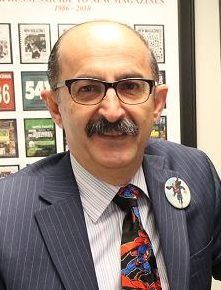 “Blackness exploded on the covers of magazines during the middle months of 2020,” Samir Husni (pictured), known as “Mr. Magazine,” wrote Nov. 20 for the Poynter Institute. “But is it hypocrisy? A performative act so that those magazines can profit from the pain of Black people, as one editor told me? Or is it a genuine change, as I heard from another?
“Blackness exploded on the covers of magazines during the middle months of 2020,” Samir Husni (pictured), known as “Mr. Magazine,” wrote Nov. 20 for the Poynter Institute. “But is it hypocrisy? A performative act so that those magazines can profit from the pain of Black people, as one editor told me? Or is it a genuine change, as I heard from another?
“And if it is genuine, why do some magazine editors and some magazine public relations directors not want to talk about the sea change that has taken place in the industry?
“Those are the questions I had when it came to the sudden awareness and inclusion of Black people on the covers of almost every mainstream magazine in the weeks and months after the brutal death of George Floyd in May. We witnessed four times as many Black subjects on the covers of magazines (mainstream and niche alike) over the last 120 days compared to the last 90 years. I reached out to some of the largest magazine companies and to some entrepreneurial publishers in the United States to find out what’s different now. . . .”
Husni also wrote, “It was only a little less than a year ago when an editor told me, off the record, that their magazine lost subscribers and newsstand buyers because they carried Black subjects in the magazine. Other sales consultants shared numbers with me, not for publication, that showed a decline of newsstand sales of up to 50% of the norm when a Black person was on the cover.
“Now, though, some editors, speaking on and off the record, tell me that this belief is history. One harsh year in history could lead to major changes in the social and commercial roles of magazines. . . .”
Too Many Media Critics Are White. Really?
Journal-isms was not mentioned, but Gabe Schneider reported Friday that, “Media reporting and critique is a very homogeneously white space that often fails to bring a depth of personal perspective, care, and experience to these issues.” His piece for the Poynter Institute appeared under the headline, “U.S. newsrooms are very white. So are the critics and the journalists that cover them.”
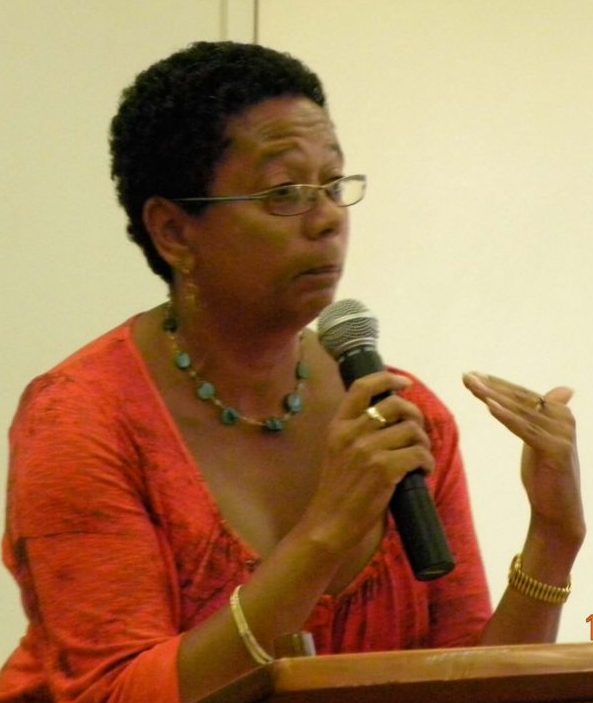 Journal-isms began in the NABJ Journal, publication of the National Association of Black Journalists, in 1991. It became an online column in 2002 for the Maynard Institute for Journalism Education when its president, the late Dori J. Maynard (pictured), was disturbed by the work of the leading news-media aggregator of the day, Jim Romenesko. “There was never any notice of people of color,” Maynard told Jackie Jones, writing in 2011 for BlackAmericaWeb.com.
Journal-isms began in the NABJ Journal, publication of the National Association of Black Journalists, in 1991. It became an online column in 2002 for the Maynard Institute for Journalism Education when its president, the late Dori J. Maynard (pictured), was disturbed by the work of the leading news-media aggregator of the day, Jim Romenesko. “There was never any notice of people of color,” Maynard told Jackie Jones, writing in 2011 for BlackAmericaWeb.com.
The irony of the Schneider’s 2,370-word piece is that its omission speaks to Maynard’s complaint. After citing examples of developments that Romenesko did not cover, Maynard said those instances “show you how many people are being left out of the coverage. Then it turns out that the person who was critiquing the coverage was leaving out the same people.”
Schneider’s piece continued, “That’s not to say that, for example, white reporters can’t write about the industry’s failures. But it is to say that they rarely do, and when they do, it’s siloed into a single piece about people of color. Ben Smith’s piece on newsroom revolts, or Margaret Sullivan’s piece on ‘The Talk,’ are both great examples of writing that explore why diversity in newsrooms is important. But they are also great examples of how coverage of these issues is often siloed. . . .”
Editing Microagressions Said to Reveal Biases
 “In editing, microaggressions can take various forms, such as the following:” Crystal Shelley (pictured), freelance editor, proofreader and licensed clinical social worker, wrote for the fall issue of “Tracking Changes: The Journal of the Society for Editing.” [PDF]
“In editing, microaggressions can take various forms, such as the following:” Crystal Shelley (pictured), freelance editor, proofreader and licensed clinical social worker, wrote for the fall issue of “Tracking Changes: The Journal of the Society for Editing.” [PDF]
“• Changing Black to black: Capitalizing Black to refer to race, identity, and culture is often done with intention and is now recommended by most style guides.
“• Changing Black to African American: Black is accepted and preferred by many Black folks, and not all Black people are African American.
“• Hyphenating Americans: Leaving terms like Asian American or African American unhyphenated has
gained wider acceptance thanks, in part, to an article by Henry Fuhrmann. Adding the hyphen can
undermine a writer’s decision to not hyphenate.
“• Changing the singular they to he/she: The singular they has become a popular choice as a more inclusive option than he/she, so changing it reverts to the he/she binary.
“• Changing someone’s pronouns: A person’s or character’s pronouns should be honored and used accordingly. Changing pronouns can be disrespectful and harmful.
“• Italicizing non-English words: When non-English words are changed from roman to italics, this can
have an othering effect because the words are treated as something different or foreign.
“• Making dialogue ‘proper’: Changing nonstandard English, regionalisms, or accented speech to make
it more ‘proper’ may strip characters of their identities.
“• Changing terms used to self-identify: The terms that people or characters use to refer to their own
identities should be respected, even if others might see the terms as controversial or derogatory.
“These types of microaggressions go against one of the cardinal rules of editing: do no harm. All of these examples can change the intended message of the copy and lead to distrust by the writer.
“If microaggressions are the result of our implicit biases, what can we do to avoid them? There are no
foolproof answers, but we can take steps to minimize the likelihood that we’ll do harm in this way. . . .”
Short Takes

Betsy Wade in 1975 in the New York Times newsroom. When she landed at the Times in 1956, she broke a 105-year-old practice of male copy editing in the news department. (Credit: New York Times)
-
“Betsy Wade, the first woman to edit news copy for The New York Times and the lead plaintiff in a landmark sex discrimination lawsuit against the newspaper on behalf of its female employees, died on Thursday at her home on the Upper West Side of Manhattan,” Robert D. McFadden reported for the Times. “She was 91. . . .”
- “Walter E. Williams, a prominent conservative economist, author and political commentator who expressed profoundly skeptical views of government efforts to aid his fellow African-Americans and other minority groups, died on Tuesday on the campus of George Mason University in Virginia, where he had taught for 40 years,” Robert D. Hershey Jr. reported Friday for The New York Times. “He was 84. . . .”
- “Deb Price — the trailblazing lesbian journalist at the Detroit News who became the first person in the nation to write a syndicated column for mainstream newspapers from a gay perspective — has died,” Georgea Kovanis reported Friday for the Detroit Free Press. “She was 62. Price came onto the scene as a columnist in 1992, when 56% of Americans, according to a CBS News poll, said they didn’t know anyone who was gay and Ellen DeGeneres wouldn’t come out on her sitcom for five more years. . . . Price’s wife said she died from interstitial pneumonitis, the result of an autoimmune disease. . . .”
-
“Kelly Lytle Hernandez, a professor of History, African American Studies and Urban Planning at UCLA, and Kevin Merida, a senior vice president at ESPN and editor-in-chief of The Undefeated, have been elected to the Pulitzer Prize Board,” Columbia University announced Thursday.
-
“The ‘superpredator’ theory, besides being a racist trope, was not borne out in crime statistics,” Carroll Bogert and LynNell Hancock explained Nov. 20 for the Marshall Project, in partnership with NBC News. “An academic named John J. DiIulio Jr. coined the term for a November 1995 cover story in The Weekly Standard, a brand-new magazine of conservative political opinion that hit pay dirt with the provocative coverline, ‘The Coming of the Super-Predators.’ ” Bogert and Hancock added, “It failed as a theory, but as fodder for editorials, columns and magazine features, the term ‘superpredator’ was a tragic success — with an enormous, and lasting, human toll. . . .”
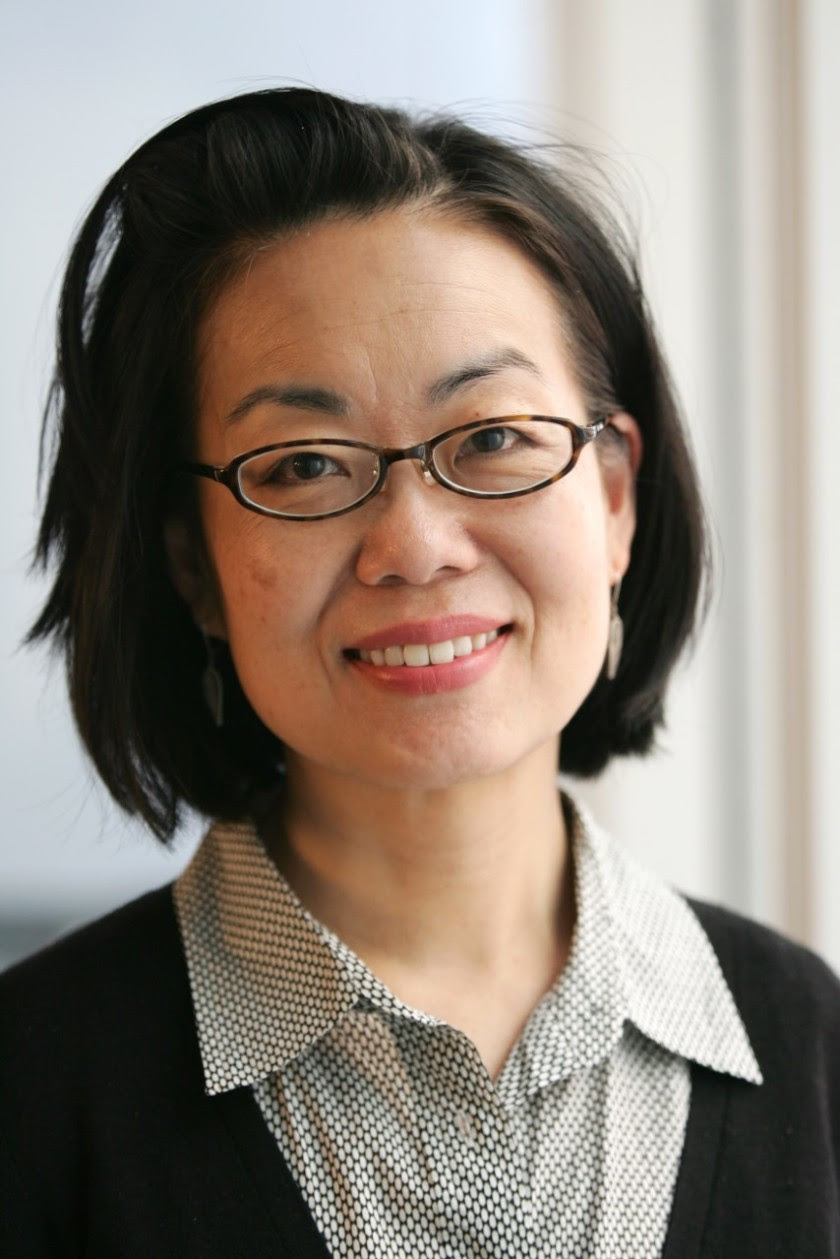 Terry Tang (pictured) is the new op-ed and Sunday Opinion editor at the Los Angeles Times, reporting to Sewell Chan, editorial page editor, Chan and Executive Editor Norman Pearlstine announced Wednesday. “Tang joined The Times in July 2019 from the American Civil Liberties Union, where she served as director of publications and editorial for two years,” they wrote. “Before that, she worked at the New York Times for 20 years,” and as deputy editorial page editor, was the first Asian American on the New York Times masthead.
Terry Tang (pictured) is the new op-ed and Sunday Opinion editor at the Los Angeles Times, reporting to Sewell Chan, editorial page editor, Chan and Executive Editor Norman Pearlstine announced Wednesday. “Tang joined The Times in July 2019 from the American Civil Liberties Union, where she served as director of publications and editorial for two years,” they wrote. “Before that, she worked at the New York Times for 20 years,” and as deputy editorial page editor, was the first Asian American on the New York Times masthead.
- “Allen Media Group’s recently-acquired MGM over-the-air broadcast television network Light TV will officially transition to TheGrio.TV television network on Jan. 15, 2021 — the start of the Martin Luther King, Jr. holiday weekend,” Mark K. Miller reported Friday for TV NewsCheck. “TheGrio.TV will feature African American-focused content reaching more than 100 million U.S. households via over-the-air TV stations, cable/telco/satellite platforms and free digital streaming. TheGrio.TV — with its new network brand slogan ‘Our Culture Forever’ — will feature movies, sitcoms, dramas, concerts, talk shows, variety shows, game shows, news and lifestyle content. . . .”
- “DuJuan McCoy, CEO and owner of Circle City Broadcasting, has teamed up with the Cox Media Group TV stations to launch the Multicultural News Network (MNN), a planned national network aiming to be ‘an unbiased national forum for the voices of America’s underserved multicultural communities,’ ” John Eggerton reported Nov. 23 for Multichannel News. Eggerton also wrote, “McCoy said the plans are for an LGBTQ news hour, a Middle Eastern hour, a Black hour, a women’s hour, [a] Hispanic hour. He said there will also be programming for a mix of cultures, but that each group will get an hour to have their stories told. Bureaus will be set up in all of the major metro areas where either Cox Media or Circle City has stations, McCoy said. Each of those stations’ news departments will have a content-sharing partnership with MNN. . . .”
- “All day, Project Veritas founder James O’Keefe has been hyping the huge revelations the group would be releasing from their latest stunt,“ Matt Wilstein reported Tuesday for the Daily Beast. “In a dramatic video posted Tuesday morning, the conservative activist could be seen unmuting himself and informing CNN chief Jeff Zucker, ‘We’ve been listening to your CNN calls for basically two months and recording everything. Just wanted to ask you some questions, if you have a minute.’ . . . So what were the supposedly shocking comments O’Keefe uncovered? According to his group’s Tuesday night release, the most damning thing anyone on CNN’s editorial team did was accuse Fox News’ Tucker Carlson of being a racist. . . .”
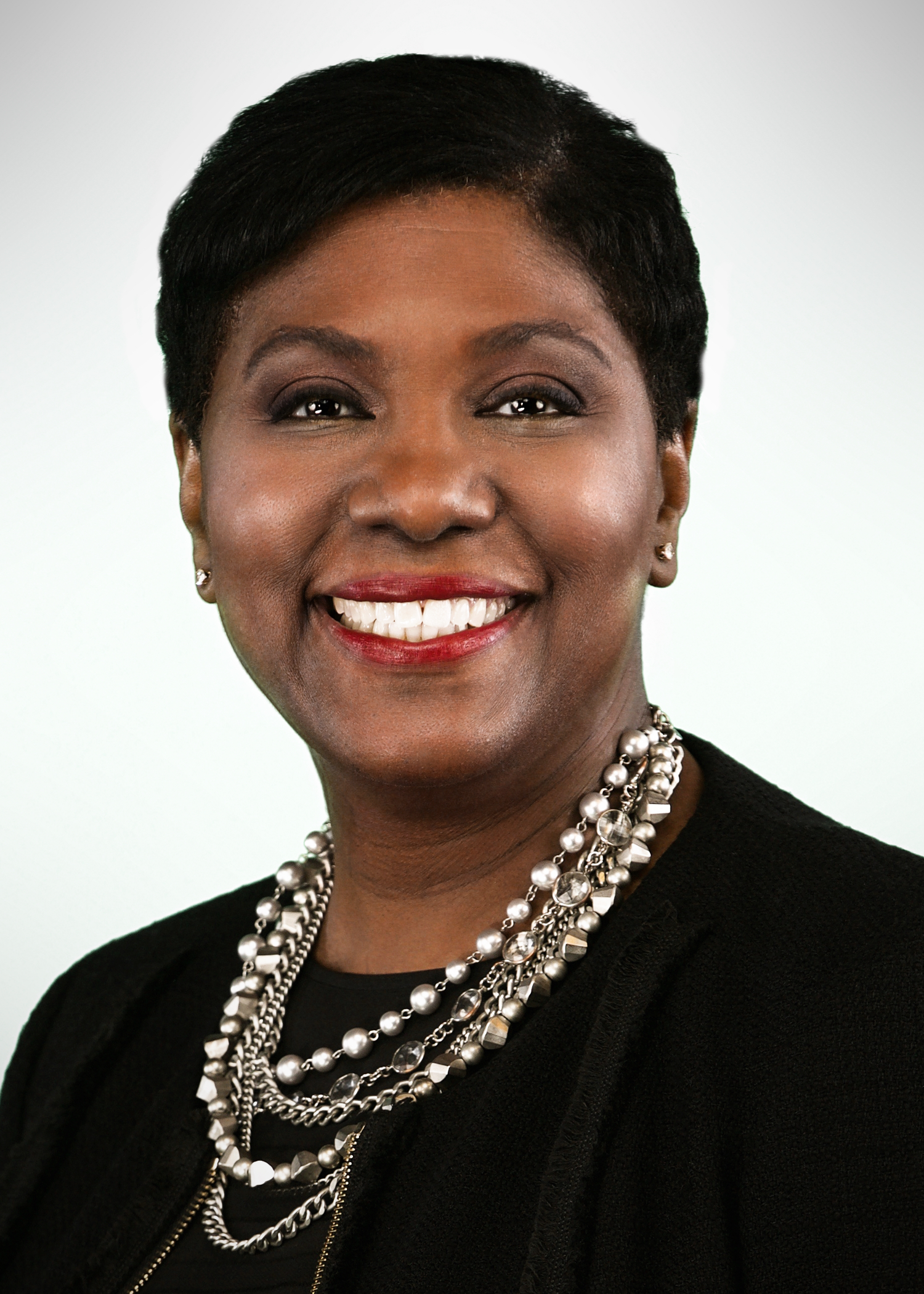 “CBS has tapped a veteran journalist, Andrea Parquet-Taylor (pictured), to run its joint newsroom serving KCBS-TV Channel 2 and KCAL-TV Channel 9 in Los Angeles,” Meg James reported Nov. 19 for the Los Angeles Times. “Parquet-Taylor joins the Los Angeles stations as news director Dec. 7, CBS said . . . . She will try to stabilize a newsroom that has weathered management turnover in recent years, dramatic cuts amid the COVID-19 outbreak and allegations of age and gender discrimination. . . .”
“CBS has tapped a veteran journalist, Andrea Parquet-Taylor (pictured), to run its joint newsroom serving KCBS-TV Channel 2 and KCAL-TV Channel 9 in Los Angeles,” Meg James reported Nov. 19 for the Los Angeles Times. “Parquet-Taylor joins the Los Angeles stations as news director Dec. 7, CBS said . . . . She will try to stabilize a newsroom that has weathered management turnover in recent years, dramatic cuts amid the COVID-19 outbreak and allegations of age and gender discrimination. . . .”
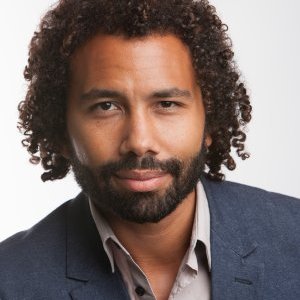 Nicholas Casey (pictured) will lead a reopened Madrid bureau, The New York Times announced Tuesday. “Nick joined The Times in 2015 after working at The Wall Street Journal,” Michael Slackman, assistant managing editor for International, and his team wrote. “He did a brief turn on Metro before taking on one of our most challenging assignments as Caracas bureau chief. He immediately hit the road, crossing Venezuela town by town, discovering how a once-affluent country was disintegrating under the authoritarian leadership of Nicolás Maduro. . . .”
Nicholas Casey (pictured) will lead a reopened Madrid bureau, The New York Times announced Tuesday. “Nick joined The Times in 2015 after working at The Wall Street Journal,” Michael Slackman, assistant managing editor for International, and his team wrote. “He did a brief turn on Metro before taking on one of our most challenging assignments as Caracas bureau chief. He immediately hit the road, crossing Venezuela town by town, discovering how a once-affluent country was disintegrating under the authoritarian leadership of Nicolás Maduro. . . .”
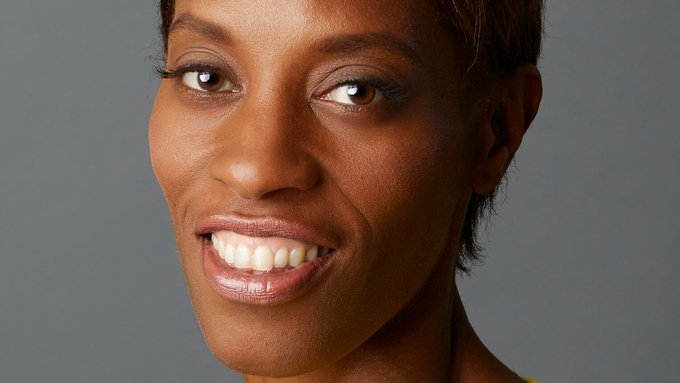 Dawn Davis (pictured), the new editor in chief at Bon Appétit, “thinks from 30,000 feet. You will see it through the content,” award-winning chef Marcus Samuelsson told CNN Business, Kerry Flynn wrote Monday. “It’s going to dramatically change. It’s going to be dramatically more inclusive, and that then impacts the industry and that forces our competitors to look at that space. It’s needed.” Flynn added, “the food media industry has long been accused of promoting a “White aesthetic” that props up White chefs and personalities, as Navneet Alang wrote for Eater.”
Dawn Davis (pictured), the new editor in chief at Bon Appétit, “thinks from 30,000 feet. You will see it through the content,” award-winning chef Marcus Samuelsson told CNN Business, Kerry Flynn wrote Monday. “It’s going to dramatically change. It’s going to be dramatically more inclusive, and that then impacts the industry and that forces our competitors to look at that space. It’s needed.” Flynn added, “the food media industry has long been accused of promoting a “White aesthetic” that props up White chefs and personalities, as Navneet Alang wrote for Eater.”
- Forbes magazine’s latest “30 Under 30” list includes Omar Jimenez, 27, national correspondent for CNN; Rachel Scott, 27, White House correspondent for ABC News; Patrice Caldwell, 27, founder, People of Color in Publishing; Adam Harris, 29, staff writer, The Atlantic; Astead Herndon, 27, national politics reporter, The New York Times; Ashley Velez, 29, “a multimedia journalist and producer who amplifies the voices of marginalized people,” and Malika Andrews, 25, reporter for ESPN.
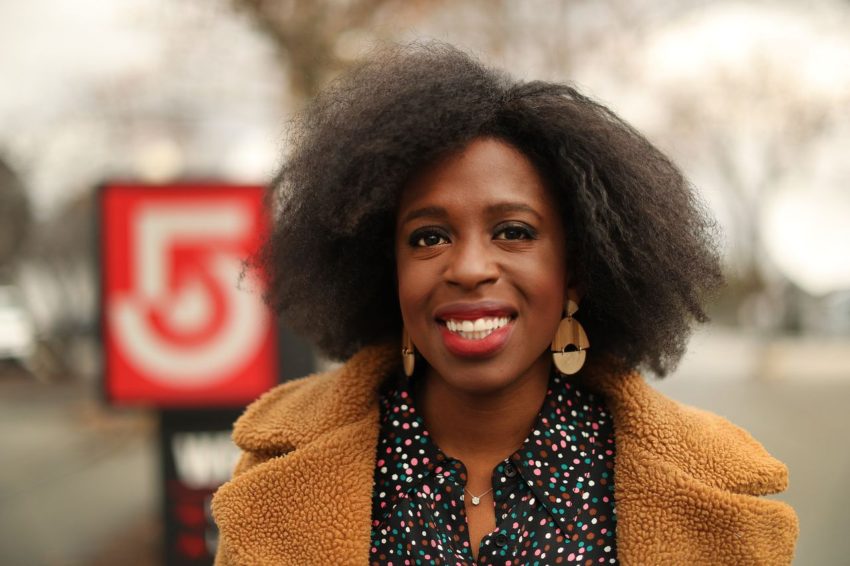
- “I have to overperform just to be seen as good enough,“ Nneka Nwosu Faison, executive producer of the newsmagazine “Chronicle” on WCVB-TV in Boston, wrote Monday for the Boston Globe under the headline, “‘Your skin is so dark’: A WCVB producer on the challenges of being a Black journalist in New England.” Faison also wrote, “Photographers didn’t know how to light me properly, or they wouldn’t light me at all. I would joke with them, ‘Hey guys, I’m Black, and it’s OK, but I need a light. You can’t use the same setup as you use for my friend who’s a blond, blue-eyed reporter. You can’t shoot me in front of a white wall, because I’m going to look like a big black blob. Some people are so afraid to talk about race or the fact that you require something different, so they just pretend you don’t. . . .”
- It is “time for the Thanksgiving Day origin story to finally be exposed for what it is – a myth riddled with historical inaccuracies,” Matthew Pagels, president of the Seneca Nation of Indians, wrote Thursday for the Buffalo News. “In truth, the Wampanoag Indians were harmed, exploited, even killed through the spread of disease as a result of the pilgrims’ presence.” Pagels also urged the state Board of Regents “to revisit this important issue and finally update New York’s public-school curriculum to represent America’s true history, which indigenous people played a key role in shaping. The board must also address the lack of rules for certifying Native language and culture teachers, which makes it difficult to find qualified individuals for these positions.”
- Michelle Ebanks, recent CEO OF Essence Communications, has been named the first fully outside director at The Atlantic, the magazine company announced Thursday.
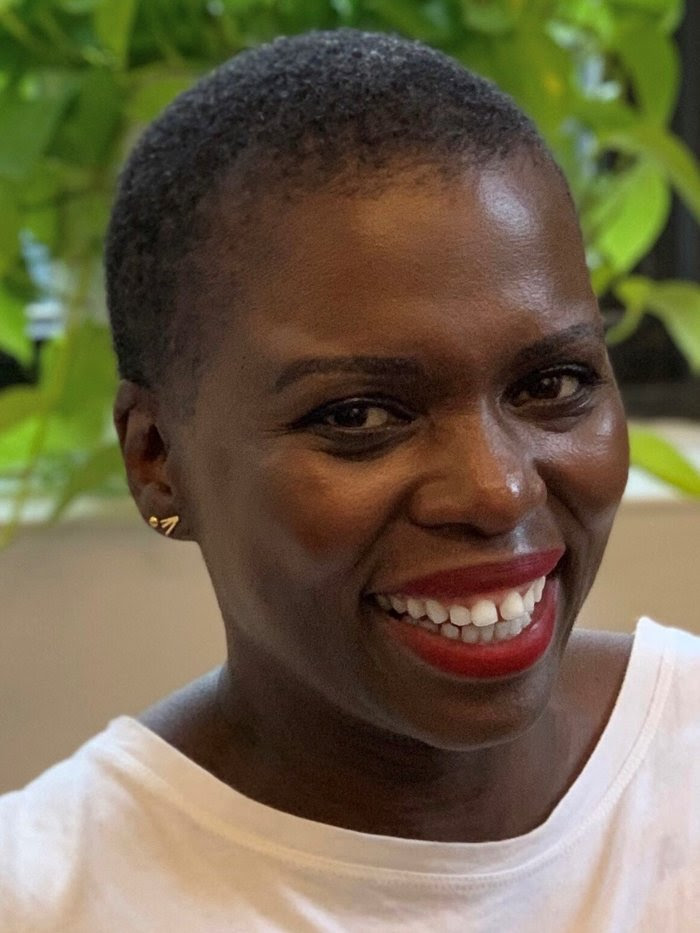 Yolanda Sangweni (pictured), director of programming and editorial at the Luminary podcast network, has been named senior director for programming at NPR. “Yolanda will be a key member of the programming leadership team, helping drive our strategy to reach new audiences, including developing new programs and initiatives,” NPR said Nov. 23. “She will also be the executive sponsor for several of our existing shows, including Throughline and CodeSwitch, and act as programming’s senior liaison with the Marketing division.”
Yolanda Sangweni (pictured), director of programming and editorial at the Luminary podcast network, has been named senior director for programming at NPR. “Yolanda will be a key member of the programming leadership team, helping drive our strategy to reach new audiences, including developing new programs and initiatives,” NPR said Nov. 23. “She will also be the executive sponsor for several of our existing shows, including Throughline and CodeSwitch, and act as programming’s senior liaison with the Marketing division.”
- For his “Into America” podcast Thursday, MSNBC’s Trymaine Lee conducted a “conversation with Tamara Payne and her mother, Violet Payne, on the influence of Malcolm X on their family, and fulfilling Les Payne’s last great work of journalism.” The work was the Malcolm X biography “The Dead are Arising: The Life of Malcolm X.” “Payne, who passed away in 2018 at the age of 76, was unflinching in his own right. And for Black journalists like me, Payne wasn’t just a mentor or hero, he was an archetype,” Lee told listeners. The book by Payne and co-author Tamara Payne, his daughter, won the National Book Award last month.
- “Progressive Asian American organizers say online misinformation, specifically regarding the Democrats and the president-elect, played a role in exposing Asian American voters to more radical right-wing views since 2016,” Terry Nguyen reported Nov. 27 for vox.com. “First-generation immigrants who have a contentious history with China and communist governments — such as those from Cambodia, Taiwan, Vietnam, and Laos — are more susceptible to the false claims Trump has made about China and its supposed impact on the election and the Democratic Party’s ‘socialist’ tendencies. . . .”
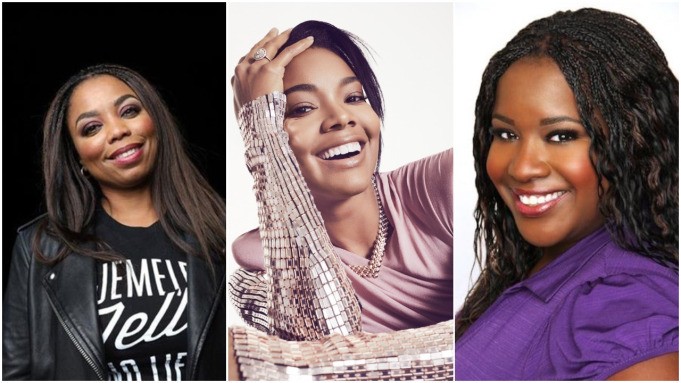
- “Former ESPN star Jemele Hill is moving into scripted television and has teamed with Gabrielle Union to develop a half-hour comedy series about Black women with financial independence.,” Peter White reported Nov. 23 for Deadline. New Money, which is based on a story from Hill and The Undefeated journalist Kelley Carter, who run Lodge Freeway Media, is in development at Showtime. . . .”
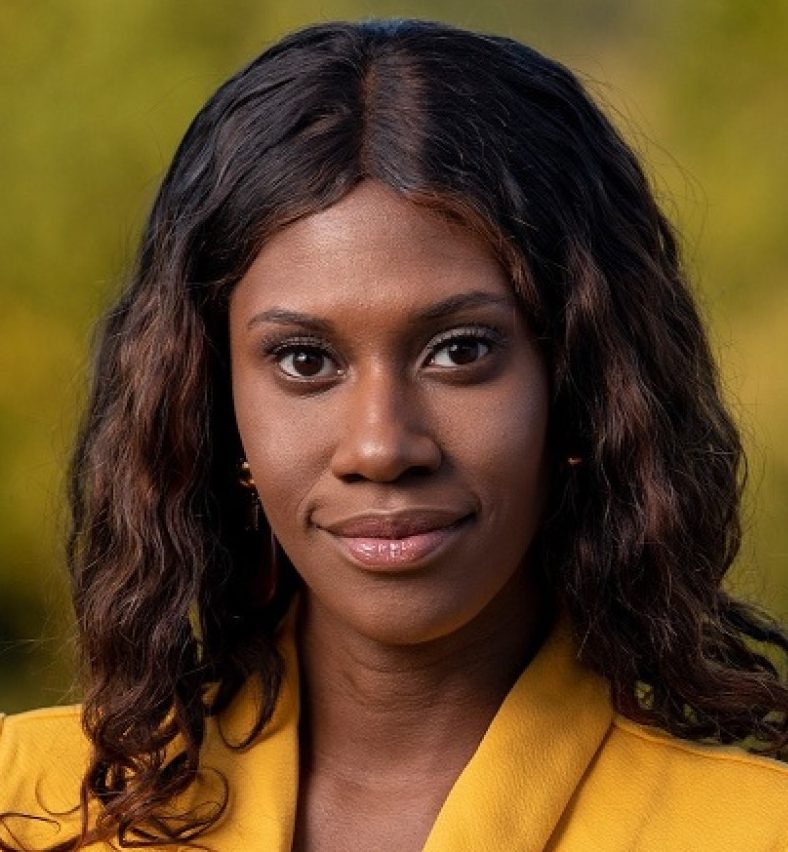 “Sasha-Ann Simons (pictured) is the new host of WBEZ’s midday talk show Reset,” Natalie Moore reported Nov.20 for WBEZ-FM in Chicago. “She reports on race, identity and affordability in Washington, D.C., for WAMU, the NPR member station in the nation’s capital.” Jenn White, former host of “Reset,” went to WAMU in July to host the daily talk show “1A,” which is transmitted by NPR.
“Sasha-Ann Simons (pictured) is the new host of WBEZ’s midday talk show Reset,” Natalie Moore reported Nov.20 for WBEZ-FM in Chicago. “She reports on race, identity and affordability in Washington, D.C., for WAMU, the NPR member station in the nation’s capital.” Jenn White, former host of “Reset,” went to WAMU in July to host the daily talk show “1A,” which is transmitted by NPR.
- “An effort to honor slain journalists with a national memorial took a significant step forward Wednesday as Congress passed a bipartisan bill authorizing its planning and construction in Washington, D.C.,” Brooks DuBose wrote Thursday for the Capital Gazette in Annapolis, Md., scene of a newsroom shooting in 2018. Vincent Randazzo, spokesman for the Fallen Journalists Memorial Foundation, messaged Journal-isms that “the legislation authorizes our foundation to establish a memorial ‘to commemorate America’s commitment to a free press by honoring journalists who have sacrificed their lives in service to that cause.’ ” The Newseum has a database of 2,344 such individuals from around the world, Randazzo said.
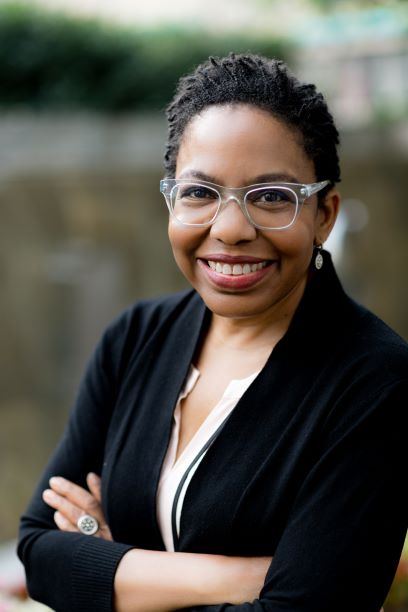 The Corporation for Public Broadcasting has promoted Kathryn Washington (pictured) from vice president to senior vice president, television content, effective Dec. 19, CPB announced Wednesday. Washington “will lead the development and implementation of strategies for CPB’s investments in mission-focused television and digital productions. She will work closely with PBS, public television stations and independent production organizations to support innovative, diverse and creative programming and content for national public media audiences.”
The Corporation for Public Broadcasting has promoted Kathryn Washington (pictured) from vice president to senior vice president, television content, effective Dec. 19, CPB announced Wednesday. Washington “will lead the development and implementation of strategies for CPB’s investments in mission-focused television and digital productions. She will work closely with PBS, public television stations and independent production organizations to support innovative, diverse and creative programming and content for national public media audiences.”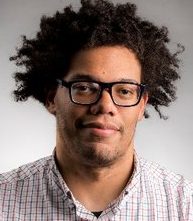 Vernal Coleman (pictured), started his first full week Monday as a Midwest reporter for ProPublica, leaving the Boston Globe. “I actually cut my teeth as a reporter in Chicago years ago and still have a lot of love for the Midwest,” Coleman messaged Journal-isms. “Also, ProPublica specializes in the type of investigative journalism that I’ve always wanted to do. So, I was intrigued when an editor approached me about joining up.”
Vernal Coleman (pictured), started his first full week Monday as a Midwest reporter for ProPublica, leaving the Boston Globe. “I actually cut my teeth as a reporter in Chicago years ago and still have a lot of love for the Midwest,” Coleman messaged Journal-isms. “Also, ProPublica specializes in the type of investigative journalism that I’ve always wanted to do. So, I was intrigued when an editor approached me about joining up.”
- In Washington, “WRC reporter Aaron Gilchrist is heading to NBC News’s streaming service NBC News Now as an anchor and correspondent for NBC News Now — and the local Washington D.C. station didn’t waste time naming the morning anchor’s replacement,” Stephanie Tsoflias Siegel reported Nov. 24 for TV Spy. “Jummy Olabanji, who has been with the NBC affiliate for 18 months, will be Eun Yang‘s new co-anchor on News4 Today beginning in early January, the station said.”
- The board of the Women’s Media Center has unanimously elected Janet Dewart Bell as its new chair, the center announced Wednesday. “Bell is founder and president of LEAD Intergenerational Solutions, a nonprofit organization that is dedicated to developing inclusive intergenerational leaders as social change agents. Bell has extensive experience as a communications strategist, television and radio producer, and management consultant. . . .”
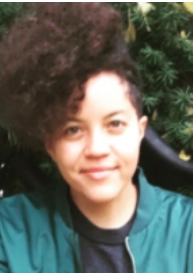 Jane Coaston (pictured) is joining The New York Times from Vox, “where she has been a senior politics reporter focusing on conservatism, the American right, the G.O.P. and white nationalism,” The Times said Nov. 6. Coaston will helm the Opinion section podcast “The Argument” beginning in early 2021 and “be joined by a rotating cast of guests and debaters from within and outside of Opinion.”
Jane Coaston (pictured) is joining The New York Times from Vox, “where she has been a senior politics reporter focusing on conservatism, the American right, the G.O.P. and white nationalism,” The Times said Nov. 6. Coaston will helm the Opinion section podcast “The Argument” beginning in early 2021 and “be joined by a rotating cast of guests and debaters from within and outside of Opinion.”
- “Award-winning Political Analyst for MSNBC and Host of ‘The Reid Out,’ Joy Reid, will join the journalism sequence in the Department of Media, Journalism and Film in the Cathy Hughes School of Communications as a Hearst Visiting Professor to teach a master class in Spring 2021 for junior and seniors studying journalism,” Howard University announced Friday.
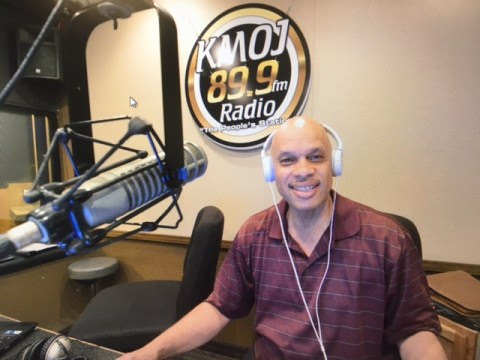 “Before he relocated a couple of weeks ago to Los Angeles, Ray Richardson (pictured) left his indelible mark on the Twin Cities.,” Charles Hallman reported Thursday for the Minnesota Spokesman-Recorder. “But even before he relocated here from Phoenix almost three decades ago, he had already made history. . . .During his 24-year tenure there, Richardson was that paper’s only Black sportswriter. He covered every local pro team, many Gopher teams, and other sporting teams in town. ‘At times I felt stressed out, but I loved doing it. It was fun,’ he recalled. We asked Richardson to list in no particular order his top five beats. . . .”
“Before he relocated a couple of weeks ago to Los Angeles, Ray Richardson (pictured) left his indelible mark on the Twin Cities.,” Charles Hallman reported Thursday for the Minnesota Spokesman-Recorder. “But even before he relocated here from Phoenix almost three decades ago, he had already made history. . . .During his 24-year tenure there, Richardson was that paper’s only Black sportswriter. He covered every local pro team, many Gopher teams, and other sporting teams in town. ‘At times I felt stressed out, but I loved doing it. It was fun,’ he recalled. We asked Richardson to list in no particular order his top five beats. . . .”
- “Jimmie Gates (in video) has worked nearly every beat at the Clarion Ledger and its former sister paper, the Jackson Daily News, since his byline first appeared four decades ago,” Luke Ramseth wrote Thursday for the Mississippi Clarion Ledger. “He began writing community features, then took on minority affairs as one of only a handful of Black journalists at the paper in the 1980s. He covered county and city governments, crisscrossed the halls of the Mississippi State Capitol and finally settled into a role focused on courts and criminal justice. . . . Gates, 64, retired this week after accepting a voluntary buyout offer from the Clarion Ledger’s parent company, Gannett. Two investigative journalists, Alissa Zhu and Giacomo Bologna, also departed after accepting the buyout. . . .”
- “The near future of in-person schooling is uncertain due to the COVID-19 pandemic, but Virginia students will return to a system where several penalties for misbehavior have been taken off the table,” Brendan Shillingford and Anya Sczerzenie wrote Thursday for Capital News Service. “Two new laws seek to stop criminal punishments in elementary, middle and secondary schools. Sen. Jennifer McClellan, D-Richmond, . . .said she was compelled to introduce these bills after looking at data released by the Center for Public Integrity in 2015 and seeing that Virginia led the nation in nearly three times the rate of referral of students to law enforcement. . . .”
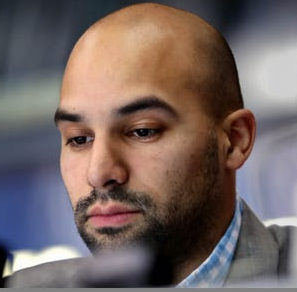 “Today is my last day after nearly 7½ years at the Journal Sentinel,” Matt Velazquez (pictured) wrote Tuesday for the Milwaukee Journal Sentinel. “By my count, I covered 485 college and professional games in person during my time at the Journal Sentinel, not including a pair of golf majors and a half-dozen high school state championships. . . . It’s time for me to help my wife fulfill her dream of becoming a physician. We moved to Indianapolis in August so that she could get started on that path. I’m no stranger to a long commute, but Indianapolis to Milwaukee just isn’t feasible. . . .”
“Today is my last day after nearly 7½ years at the Journal Sentinel,” Matt Velazquez (pictured) wrote Tuesday for the Milwaukee Journal Sentinel. “By my count, I covered 485 college and professional games in person during my time at the Journal Sentinel, not including a pair of golf majors and a half-dozen high school state championships. . . . It’s time for me to help my wife fulfill her dream of becoming a physician. We moved to Indianapolis in August so that she could get started on that path. I’m no stranger to a long commute, but Indianapolis to Milwaukee just isn’t feasible. . . .”
- “Uganda has deported journalists attached to CBC News, a Canadian public broadcaster, who were in the country to cover the 2021 General Election,” Andrew Bagala reported Tuesday for the Daily Monitor in Uganda. Ofwono Opondo, executive director of Uganda Media Centre, had tweeted in response to a tweet from Margaret Evans, one of those deported, “Do we really need you to scrutinise our electoral process to qualify as credible? Uganda reserves the right to admit foreign persons, including journalists. Good, stay where you are.”
- “There are concerns that Ethiopian authorities are getting uncomfortable with foreign commentators on the ongoing conflicts in the northern region of Tigray, after an analyst was deported,” Fred Oluoch reported Nov. 25 for The East African in Kenya. “On November 21, the Ethiopian authorities deported International Crisis Group’s Ethiopia Senior Analyst William Davison, on grounds that he provided the wrong information for his work permit when he entered the country in 2019. Mr Davison has been holding regular interviews with various news networks and newspapers since the conflict started on November 4, but ICG now says that it appears that Addis Ababa is uncomfortable with views that are different from its own. . . .”
- “Amid armed clashes in Ethiopia that are almost impossible for the media to cover,” Reporters Without Borders Thursday called on the country’s authorities “to immediately release all detained journalists, one of whom has just caught Covid-19 in prison. . . .”
- “The Association of Journalists of Guatemala (APG) registered 124 attacks against the press in the first 11 months of the administration of President Alejandro Giammattei, who took office on January 14,” Deutsche Welle reported.
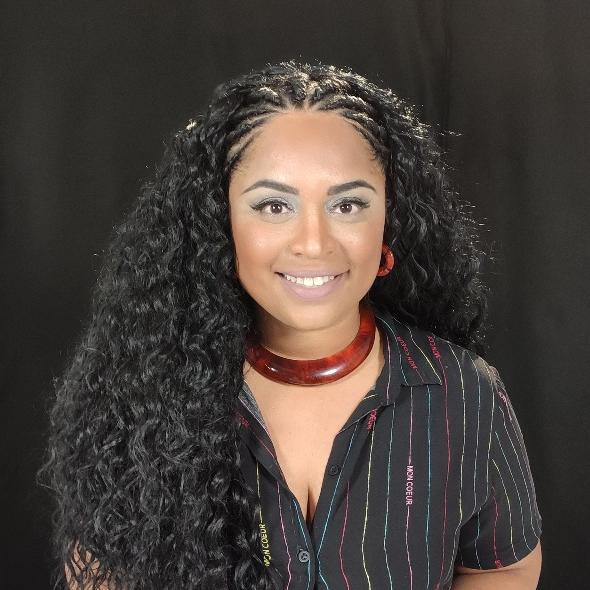 “Despite comprising more than 55 percent of the Brazilian population, Black people are still a minority in the country’s major newsrooms, mainly in leadership positions,” Marina Estarque reported Nov. 24 for LatAm Journalism Review. “The lack of diversity in media is reflected in news coverage, which ends up reinforcing stereotypes and prejudices. To counteract this scenario, many Black media outlets and collectives have emerged in recent years in the country, to give visibility to the anti-racist struggle and to do journalism with a racial perspective. Many of them have projects to train students on how to do anti-racist journalism, in addition to training and mentoring Black professionals. . . .” (Pictured: Journalist Thais Bernardes, who founded Notícia Preta in 2018)
“Despite comprising more than 55 percent of the Brazilian population, Black people are still a minority in the country’s major newsrooms, mainly in leadership positions,” Marina Estarque reported Nov. 24 for LatAm Journalism Review. “The lack of diversity in media is reflected in news coverage, which ends up reinforcing stereotypes and prejudices. To counteract this scenario, many Black media outlets and collectives have emerged in recent years in the country, to give visibility to the anti-racist struggle and to do journalism with a racial perspective. Many of them have projects to train students on how to do anti-racist journalism, in addition to training and mentoring Black professionals. . . .” (Pictured: Journalist Thais Bernardes, who founded Notícia Preta in 2018)
- “Ecuadorian authorities should not contest journalist Juan Sarmiento’s appeal of a recent criminal conviction for critical comments about a local politician, and the country should remove speech laws from its penal code,” the Committee to Protect Journalists said Nov. 20.
- “Philippine authorities should independently investigate the circumstances surrounding the killing of journalist Ronnie Villamor, and hold those responsible to account,” the Committee to Protect Journalists said Nov. 23. “In the afternoon of November 14, Philippine Army soldiers shot and killed Villamor, a contributor to the local independent Dos Kantos Balita weekly tabloid, outside a military checkpoint in Milagros, a town in Masbate province in the central Philippines, while he was on his way to cover a disputed land survey, according to press reports. . . .”
- “The Egyptian state prosecutor’s office charged imprisoned Egyptian freelance photographer Sayed Abd Ellah with membership in a terrorist group and extended his pretrial detention by 15 days,” the Committee to Protect Journalists reported Monday, “according to a family member who spoke with CPJ via messaging app on the condition of anonymity, citing fear of reprisal, and news reports. . . .”
- “Since November 26, amid protests following the arrest of artist Denis Solís of the San Isidro Movement, a local freedom of expression and artistic freedom group, Cuban authorities have obstructed members of the press from doing their jobs,” the Committee to Protect Journalists said Monday, “and have intermittently blocked access to Facebook, Twitter, WhatsApp, Telegram, and Instagram, according to news reports and four local journalists who spoke with CPJ via messaging app but asked to remain anonymous, citing security concerns. . . .”
- “The Uruguay chapter of the World Association of Community Radio Stations (AMARC-Uruguay) rejected the threats from the National Director of Telecommunications, Dr. Guzmán Acosta y Lara, regarding the imminent closure of community radio stations in the country,” Observacom reported Tuesday via LatAm Journalism Review.
To subscribe at no cost, please send an email to journal-isms+subscribe@groups.io and say who you are.
Facebook users: “Like” “Richard Prince’s Journal-isms” on Facebook.
Follow Richard Prince on Twitter @princeeditor
Richard Prince’s Journal-isms originates from Washington. It began in print before most of us knew what the internet was, and it would like to be referred to as a “column.” Any views expressed in the column are those of the person or organization quoted and not those of any other entity. Send tips, comments and concerns to Richard Prince at journal-isms+owner@
View previous columns (after Feb. 13, 2016).
View previous columns (before Feb. 13, 2016)
- Diversity’s Greatest Hits, 2018 (Jan. 4, 2019)
- Book Notes: Is Taking a Knee Really All That? (Dec. 20, 2018)
- Book Notes: Challenging ’45’ and Proudly Telling the Story (Dec. 18, 2018)
- Book Notes: Get Down With the Legends! (Dec. 11, 2018)
- Journalist Richard Prince w/Joe Madison (Sirius XM, April 18, 2018) (podcast)
- Richard Prince (journalist) (Wikipedia entry)
- February 2018 Podcast: Richard “Dick” Prince on the need for newsroom diversity (Gabriel Greschler, Student Press Law Center, Feb. 26, 2018)
- Diversity’s Greatest Hits, 2017 — Where Will They Take Us in the Year Ahead?
- Book Notes: Best Sellers, Uncovered Treasures, Overlooked History (Dec. 19, 2017)
- An advocate for diversity in the media is still pressing for representation, (Courtland Milloy, Washington Post, Nov. 28, 2017)
- Morgan Global Journalism Review: Journal-isms Journeys On (Aug. 31, 2017)
- Diversity’s Greatest Hits, 2016
- Book Notes: 16 Writers Dish About ‘Chelle,’ the First Lady
- Book Notes: From Coretta to Barack, and in Search of the Godfather
- Journal-isms’ Richard Prince Wants Your Ideas (FishbowlDC, Feb. 26, 2016)
- “JOURNAL-ISMS” IS LATEST TO BEAR BRUNT OF INDUSTRY’S ECONOMIC WOES (Feb. 19, 2016)
- Richard Prince with Charlayne Hunter-Gault,“PBS NewsHour,” “What stagnant diversity means for America’s newsrooms” (Dec. 15, 2015)
- Book Notes: Journalists Follow Their Passions
- Book Notes: Journalists Who Rocked Their World
- Book Notes: Hands Up! Read This!
- Book Notes: New Cosby Bio Looks Like a Best-Seller
- Journo-diversity advocate turns attention to Ezra Klein project (Erik Wemple, Washington Post, March 5, 2014)

